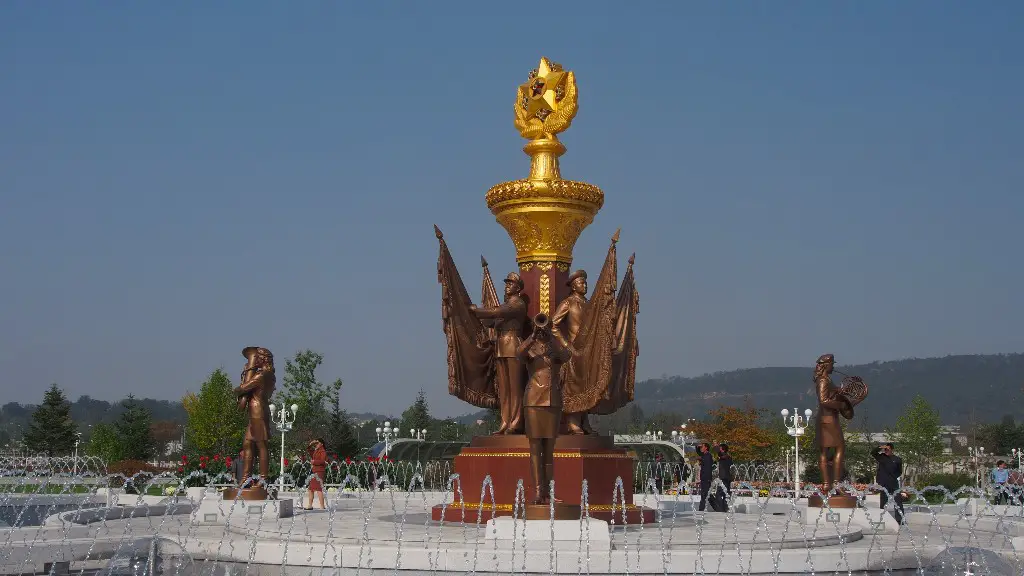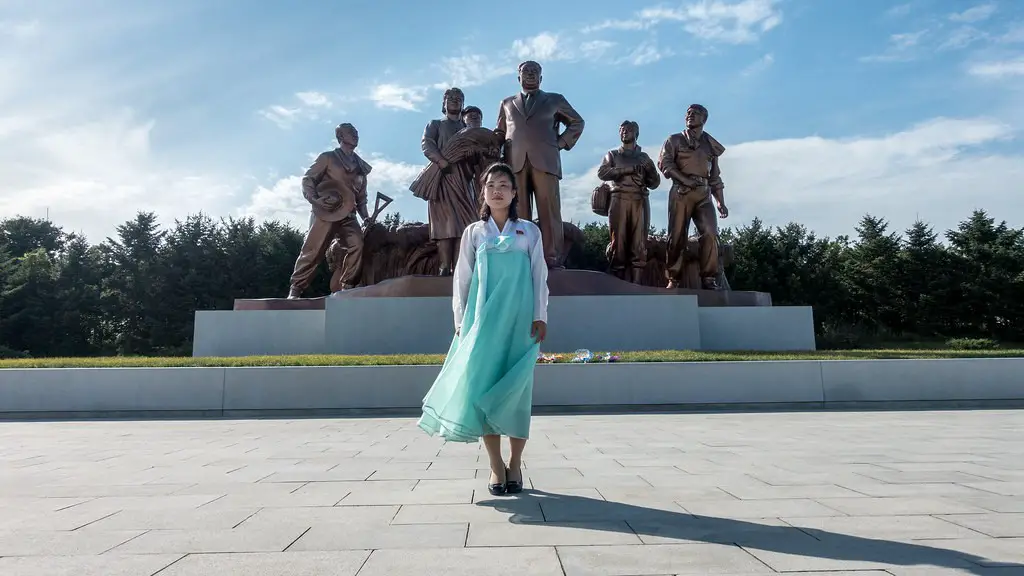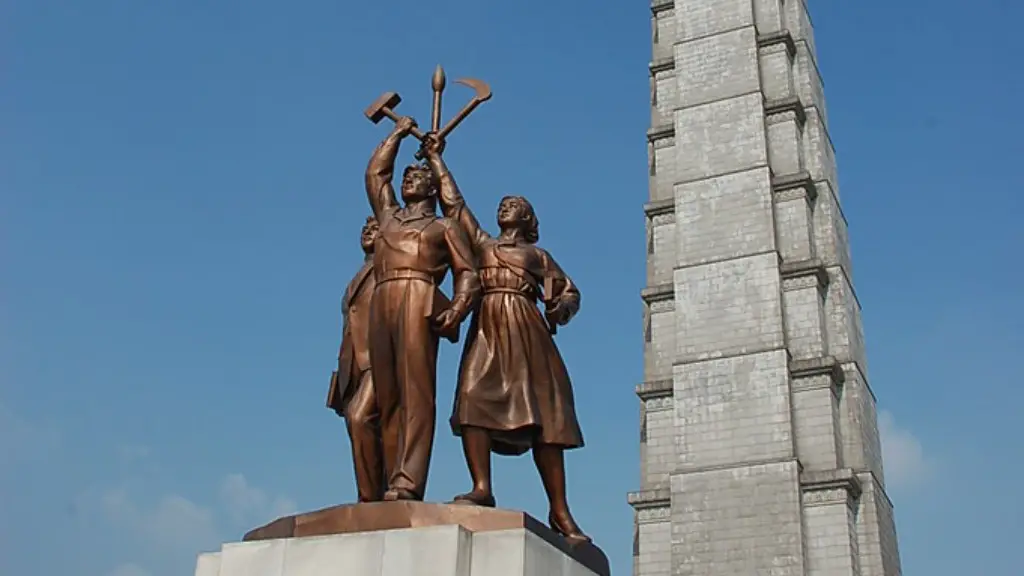History of Conflict
The tension between North Korea and South Korea has existed for many decades, beginning after World War II when a Soviet-backed government was set up in the north and an American-friendly government was established in the south. Following this, a two-year civil war ensued, during which the two parties fought for control of the peninsula, between 1950 and 1953. In 1953, the Korean War ended in a stalemate with the peninsula divided across the 38th parallel.
Since then, the two countries have remained staunchly divided, with the creation of the so-called “Demilitarized Zone” (DMZ). This buffer zone separates the two countries and is one of the most heavily militarized borders in the world. Despite increased economic integration and some diplomatic dialogue, both countries remain divided and in a technical state of war, as the armistice that ended the Korean War was never followed by a formal peace treaty.
Political Ideological Reasons
The two countries have very different political ideologies, with North Korea having adopted a form of “Juche” socialism that is distinct from the pre-1950 South Korean system. North Korea is a highly authoritarian state, led by the ruling Kim dynasty, which has maintained a tight grip on the country and its people for decades. South Korea, on the other hand, has become a vibrant democracy and thriving economy, with close ties to the United States and other Western countries.
The two countries have also taken markedly different foreign policy approaches. North Korea has sought to strengthen ties with China and has long pursued a nuclear weapons program, while South Korea has aligned itself more closely with the United States and other Western powers. The divergent ideological orientation of the two countries, along with their different geographies and economic strengths, have contributed to the long-standing division between them.
Economic Reasons
The economic trajectory of the two countries is also vastly different. North Korea remains in a state of economic stagnation and relies heavily on foreign aid to stay afloat. South Korea’s economy, by contrast, has become one of the fastest-growing in the world and has seen its economy significantly outpace its northern neighbor. South Korea’s technology and manufacturing industries, in particular, are world-leading and much stronger than those in the North.
The disparity in economic strength has not only exacerbated tensions between the two countries but has also bred resentment and suspicion in the North. North Korean leaders frequently rail against the perceived “unfair” economic imbalance between the two countries, blaming it on South Korea’s relationship with the United States, and accusing the South of deliberately “sabotaging” the North’s economy.
Military Climax
The simmering tensions between North and South Korea have occasionally boiled over into outright conflict. In March 2010, South Korea accused North Korea of sinking the Cheonan, a South Korean navy vessel, killing 46 sailors. This incident sparked numerous skirmishes, including several naval confrontations, between the two countries.
More recently, in August 2015, North and South Korea engaged in a heated exchange of artillery fire, sparked by a land-mine explosion in the DMZ that seriously injured two South Korean soldiers. The incident escalated and resulted in numerous fatalities on both sides, before the two countries finally agreed to de-escalate the situation.
Military Capacity
North and South Korea possess arguably the most formidable military forces among all countries in East Asia, with the two sides amassing more than one million active duty personnel in total. Both countries are also heavily armed, possessing a vast array of advanced weaponry.
In the event of a resumption of hostilities between the two countries, the ensuing conflict would have catastrophic consequences. Millions of lives could be lost and the economic cost of such a conflict would be immense. The immense and costly military buildup along the DMZ has acted as a major deterrent to conflict in the region and has helped to keep the peace, for now.
Prospects for a Peaceful Reunification
Though the two countries remain divided along the 38th parallel, there are some signs that a peaceful reunification of the peninsula may be possible in the future. South Korean President Moon Jae-in, for example, has taken a more conciliatory approach towards North Korea and has expressed his support for the establishment of some form of closer economic ties between the two Koreas.
These efforts have been met with some skepticism by many North Koreans, who continue to demand economic concessions as a precondition for closer ties with the South. Despite these challenges, however, there is hope that the two Koreas may one day find a way to peacefully coexist and even reunify, though such a process may take many years to achieve.
Public Perception
The notion of a peaceful reunification of the Korean Peninsula remains popular among the public in both countries. According to a poll conducted by the Asan Institute in 2018, more than 65% of respondents in both South and North Korea expressed support for the idea of a peaceful reunification.
Beyond the two Koreas, the prospect of reunification is also being discussed in international forums. While the international community has been largely silent on the matter, there have been some recent signs of movement towards a dialogue, with the United Nations and other multilateral organizations expressing their willingness to facilitate negotiations.
Cultural Exchanges
In spite of the political differences between the two countries, there has been some initiative for cultural exchanges in recent years. In June 2019, for instance, the two countries organized a joint soccer match that was attended by both South and North Korean teams. This event, described by observers as “historic”, marked the first time in nearly a decade that athletes from both countries had competed together.
In addition to this, there have been other attempts to increase cross-border cultural exchanges, such as joint concerts and cultural festivals. These small acts of cooperation are seen as a potential sign of progress in relations between the two countries and could potentially pave the way for a more peaceful future.
International Perspective
The conflict between North and South Korea has become a matter of international concern. Though much of the focus has been on the military dimensions of the conflict, the international community has also expressed its desire to see a peaceful resolution to the dispute.
In recent years, the United Nations and other multilateral organizations have sought to facilitate dialogue between the two countries. These efforts have yielded little progress thus far, with the two countries refusing to engage in direct negotiations, but some analysts argue that the dialogue is still a positive step in the right direction.
The United States, too, has taken an increasingly active role in the negotiations. The Trump administration has taken a hardline stance against North Korea’s nuclear activities and has sought to pressure the country to abandon its nuclear program. This has further complicated negotiations between North and South Korea, but there is hope that, with concerted efforts from the international community, a peaceful resolution of the conflict may one day be achieved.


